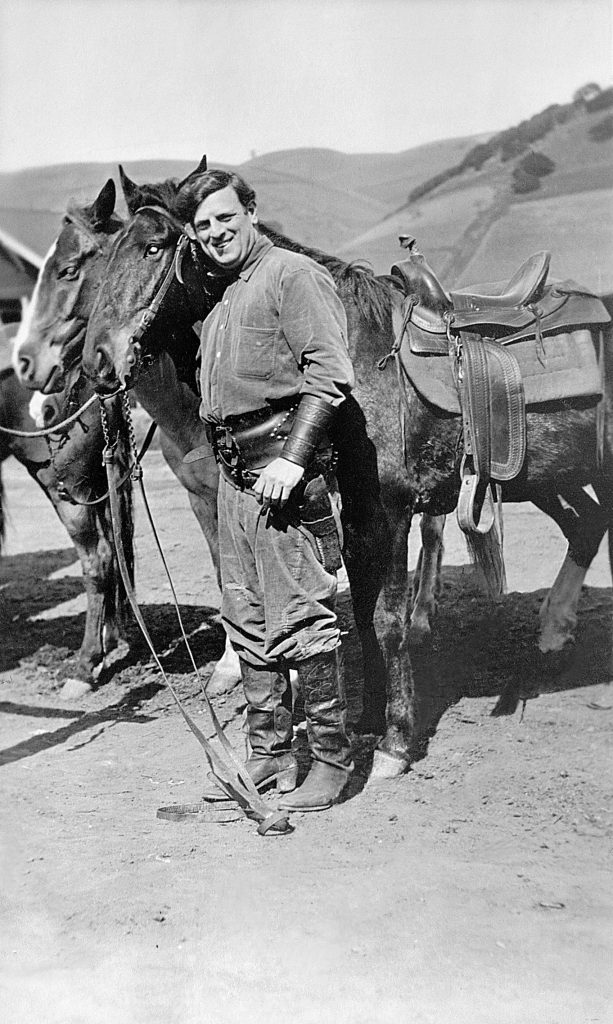We talk with historian David Kiehn of the Niles Essanay Silent Film Museum about some of the biggest western movie stars from the earliest era of film.
The 1920s may be considered the golden age of the silent era, but according to David Kiehn, historian of the Niles Essanay Film Museum in Fremont, California, the decade before is when filmmakers established a solid foundation.
“The 1910s was dominated by the one-reeler, films 15 minutes long, that often told an elaborate story in an amazingly short time,” Kiehn says. “This was also the time when movie stars became known by name.”
We talked with Kiehn, who is the author of Broncho Billy and the Essanay Film Company, about some of the biggest names in westerns from the silent-film era.
Click on the slideshow for more images
Broncho Billy
The first western movie star was Gilbert M. “Broncho Billy” Anderson. His Broncho Billy films, starting in 1910 with Broncho Billy’s Redemption, portrayed the original good-bad man, the outlaw with a bit of humanity who does the right thing when the chips are down. A search on the internet can bring up more than a dozen Broncho Billy titles. His only surviving feature film is The Son of a Gun (1918).
William S. Hart
The 1910s also saw the birth of the feature film as we know it, running an hour or more. The western star that made the most of this longer format was William S. Hart, starting with The Bargain (1914). Among the more than three dozen films he made by 1920, several that are worth seeing include Hell’s Hinges (1916), The Narrow Trail (1917), and The Toll Gate (1920). Although an easterner, he was so enamored of the West that he bought a ranch — now an L.A. County regional park with a museum — in Newhall, California, the oldest and southernmost community in Santa Clarita.
Harry Carey Sr.
Another western star, Harry Carey Sr., had a neighboring ranch — now a community park — in Newhall. He gave a youngster, John Ford, the chance to direct his features. Some of their collaborations include Straight Shooting (1917), Bucking Broadway (1917), and Hell Bent (1918). Harry’s son, Harry Carey Jr., became a prominent actor in his own right, appearing in more than 90 films, including some the John Ford westerns She Wore a Yellow Ribbon (1949), The Searchers (1956), and Cheyenne Autumn (1964).
Tom Mix
Tom Mix made short films with the Selig Polyscope Company in the 1910s, but he came to the forefront after signing with Fox Films to make features. Fox was particularly bad at preserving their silent films, and only one of Mix’s 1910s features, Ace High, survives. A few of his Selig one-reelers can still be found, such as Sage Brush Tom (1915), An Arizona Wooing (1915), and Local Color (1916).
For Your Viewing Pleasure
David Kiehn provided C&I with this list of links to some of the Niles Essanay Silent Film Museum’s various projects. “It can be quite a rabbit hole to fall into,” he says, “but hopefully you will find some good stuff to view.”
Ringling Bros. Circus Parade Film
The museum debuted a newly found film from 1902 online in October. “This one is really special,” Kiehn says. “It’s only three minutes in length, but you get to see a lot for that little time: downtown Indianapolis, a streetcar and hand-carved wagons, and other things you’d expect with the Greatest Show on Earth of the past, including horses and elephants. The history detective work included figuring out exactly who made the film and when and where it was shot.
The Great Train Robbery
Kiehn used modern technology to figure out one of the locations for this iconic classic, shot by Edwin S. Porter and the Edison Studios in the “wilds” of New Jersey. “Gilbert ‘Broncho Billy’ Anderson was featured in three roles in this 12-minute film. Highway 80 in New Jersey continues all the way to California and the East Bay near the city of Fremont, California, and the historic district of Niles.”
Click here for The Great Train Robbery in photos, and click here for an article from Essanay Chronicle.
For more information on the Niles Essanay Silent Film Museum, visit the museum’s website or YouTube, and learn more about its history here.

















